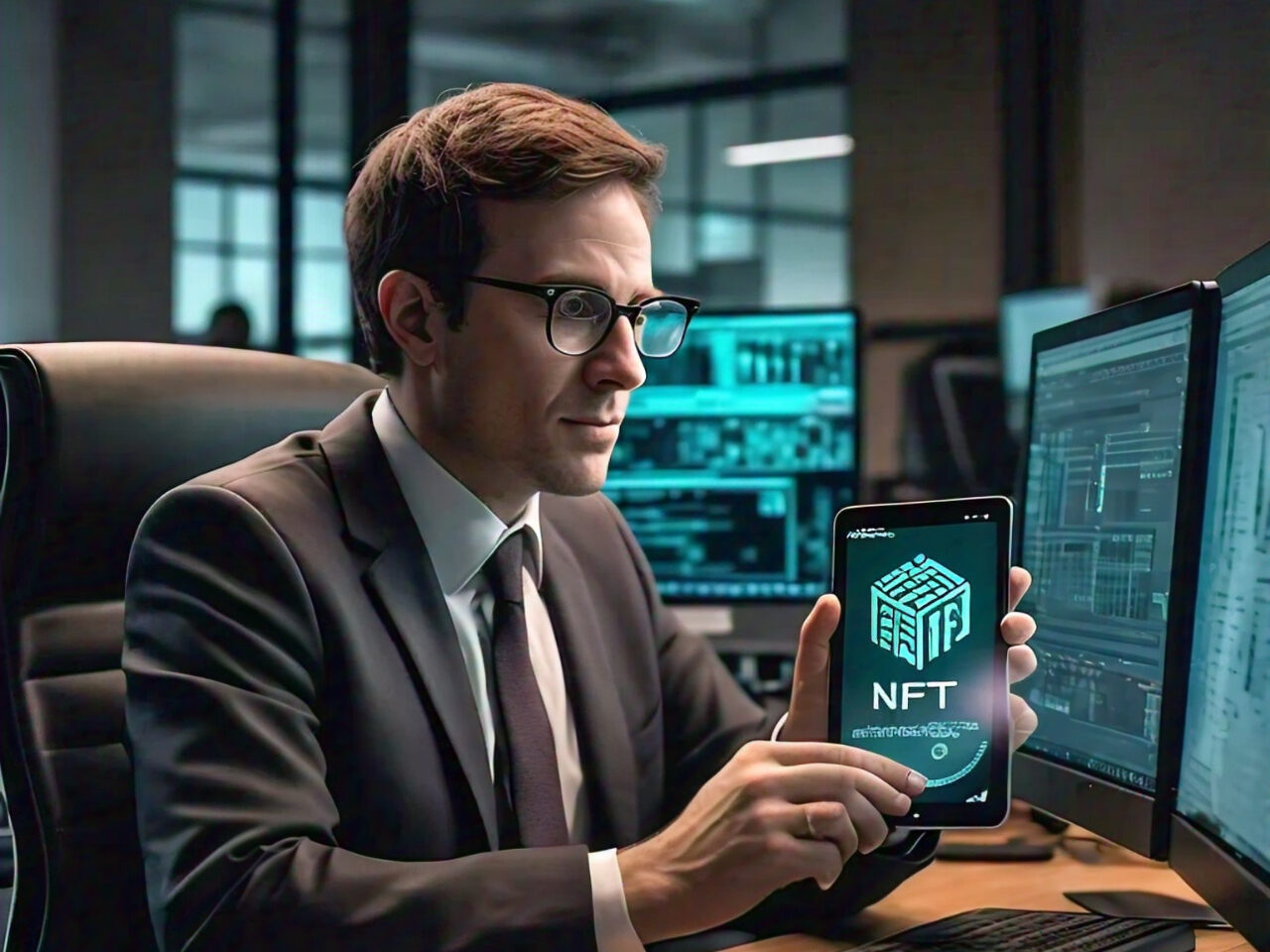
As a digital artist or NFT collector, you understand the value of your unique digital assets. Non-Fungible Tokens (NFTs) represent a new era of creativity, ownership, and investment. However, with great value comes great responsibility. Securing your NFTs is crucial to protect them from theft, loss, or damage.
In recent years, the NFT market has experienced significant growth, with sales reaching billions of dollars. This surge in popularity has also attracted malicious actors, seeking to exploit vulnerabilities and steal valuable NFTs. Moreover, the decentralized nature of NFTs poses additional challenges, making it essential to take proactive measures to ensure their security.
This comprehensive guide is designed to provide NFT collectors and digital artists with the knowledge and tools necessary to securely store their valuable digital assets. We will delve into the best practices, advanced security measures, and expert tips to protect your NFTs from various threats.
Understanding NFT Storage Risks
Common Threats to NFT Security
- Theft: Hackers can steal NFTs by gaining access to your wallet or account.
- Example: In 2022, a popular NFT marketplace suffered a hack, resulting in the theft of over $1.7 million worth of NFTs.
- Loss: NFTs can be lost due to user error, such as sending them to the wrong address or forgetting private keys.
- Example: A digital artist accidentally sent an NFT worth $100,000 to a non-existent wallet address.
- Damage: NFTs can be damaged or corrupted due to technical issues or storage device failures.
- Example: A collector stored their NFTs on a hard drive that crashed, resulting in the loss of their entire collection.
- Unauthorized Access: Scammers can gain access to your NFTs by phishing or exploiting vulnerabilities.
- Example: A collector fell victim to a phishing scam, giving away their private keys and losing access to their NFTs.
Consequences of Insecure Storage
- Financial Loss: Stolen or lost NFTs can result in significant financial losses.
- Loss of Rarity: Damaged or corrupted NFTs can lose their rarity and value.
- Damage to Reputation: Insecure storage can damage your reputation as a digital artist or collector.
- Emotional Distress: Losing access to your NFTs can cause emotional distress and anxiety.
Best Practices for Secure NFT Storage
Choosing the Right Wallet
- Hardware Wallets: Store private keys offline, providing robust security.
- Example: Ledger Live or Trezor Suite.
- Software Wallets: Digital applications storing private keys, convenient but less secure.
- Example: MetaMask or Trust Wallet.
- Custodial Wallets: Third-party services holding private keys, convenient but less secure.
- Example: Exchange wallets like Coinbase or Binance.
Setting Up and Managing Wallets
- Private Keys: Store them securely, never share or expose them.
- Passwords and 2FA: Use strong passwords and enable 2-factor authentication.
- Regular Updates: Keep wallet software up-to-date to ensure security patches.
Storing NFTs Securely
- Cold Storage: Store NFTs offline, using hardware wallets or paper wallets.
- Hot Storage: Store NFTs online, using software wallets or custodial wallets.
- Decentralized Storage: Store NFTs on decentralized platforms, like IPFS.
Real-Life Examples
- Secure Storage Success: A collector stored their NFTs in a hardware wallet and avoided a phishing scam.
- Insecure Storage Failure: An artist stored their NFTs in a software wallet and fell victim to a hack.
Protecting NFT Investments

Preserving Rarity and Scarcity
- Unique Identifiers: Ensure NFTs have unique identifiers to prevent duplication.
- Smart Contracts: Use secure smart contracts to manage NFT ownership and transfer.
- Blockchain Integrity: Verify NFTs on a reputable blockchain to ensure immutability.
Preventing Unauthorized Access
- Access Control: Limit access to NFTs using multi-signature wallets or access controls.
- Encryption: Encrypt NFTs to protect them from unauthorized viewing or theft.
- Secure Communication: Use secure communication channels when transferring NFTs.
Safeguarding Provenance and Ownership
- Transparent Ownership: Maintain transparent ownership records to prevent disputes.
- Verifiable Provenance: Ensure NFTs have verifiable provenance to maintain value.
- Secure Transfer: Use secure transfer methods to prevent ownership disputes.
Real-Life Examples
- Rarity Preservation: A digital artist used unique identifiers to preserve the rarity of their NFT collection.
- Unauthorized Access Prevention: A collector used access control to prevent unauthorized access to their NFTs.
- Provenance Safeguarding: An artist maintained transparent ownership records to safeguard the provenance of their NFTs.
Digital Artists’ Concerns
Protecting Creative Work
- Copyright and Licensing: Understand copyright and licensing agreements to protect your work.
- Watermarking and Signatures: Use watermarking and digital signatures to identify your work.
- Secure Collaboration: Collaborate securely with other artists to prevent unauthorized use.
Maintaining Ownership and Control
- Smart Contract Management: Manage smart contracts to maintain ownership and control.
- Decentralized Storage: Store your NFTs decentralized to maintain control.
- Access Control: Limit access to your NFTs to maintain control.
Securing Royalties and Residuals
- Smart Contract Royalties: Program smart contracts to secure royalties.
- Transparent Accounting: Maintain transparent accounting to ensure accurate royalty payments.
- Secure Payment Channels: Use secure payment channels to receive royalties.
Real-Life Examples
- Creative Work Protection: A digital artist used watermarking and digital signatures to protect their work from unauthorized use.
- Ownership and Control: An artist maintained ownership and control of their NFTs by managing smart contracts and storing them decentralized.
- Royalty Securing: A creator secured royalties by programming smart contracts and maintaining transparent accounting.
Advanced Security Measures
Multi-Signature Wallets
- Shared Control: Require multiple signatures to authorize transactions.
- Improved Security: Reduce risk of single-point failure or unauthorized access.
- Collaborative Management: Enable secure collaboration and shared management of NFTs.
Hardware Security Modules (HSMs)
- Secure Key Storage: Store private keys securely in hardware modules.
- Tamper-Evident: Detect and respond to tampering attempts.
- High-Security Standards: Meet high-security standards for sensitive data protection.
Institutional-Grade Storage
- Secure Data Centers: Store NFTs in secure, climate-controlled data centers.
- Redundancy and Backup: Ensure redundancy and backup to prevent data loss.
- Advanced Security Protocols: Implement advanced security protocols for secure access.
Real-Life Examples
- Multi-Signature Wallet Success: A collector used a multi-signature wallet to securely manage their NFT collection with multiple stakeholders.
- HSM Protection: An artist used an HSM to protect their private keys and prevent unauthorized access.
- Institutional-Grade Storage: A digital art institution stored their NFT collection in a secure data center with advanced security protocols.
Long-term Storage and Legacy Planning

Reliable Solutions for Extended Storage
- Decentralized Storage: Store NFTs on decentralized platforms like IPFS or Filecoin.
- Cloud Storage: Use cloud storage services like Google Cloud or Amazon S3.
- Hybrid Storage: Combine decentralized and cloud storage for added security.
Inheritance Planning
- Clear Documentation: Maintain clear documentation of NFT ownership and storage.
- Beneficiary Designation: Designate beneficiaries for NFT inheritance.
- Secure Transfer: Ensure secure transfer of NFTs to beneficiaries.
Preparing for Legacy
- Digital Estate Planning: Plan for the management and transfer of digital assets.
- NFT Conservation: Ensure the long-term conservation and preservation of NFTs.
- Artistic Legacy: Plan for the continuation of artistic legacy and creative work.
Real-Life Examples
- Decentralized Storage Success: A collector stored their NFTs on IPFS, ensuring decentralized and secure storage.
- Inheritance Planning: An artist designated beneficiaries for their NFT collection, ensuring secure transfer and inheritance.
- Legacy Planning: A digital art institution planned for the long-term conservation and preservation of their NFT collection.
Conclusion
Recap of Key Takeaways
- Secure Storage: Store NFTs securely using hardware wallets, decentralized storage, and institutional-grade storage.
- Best Practices: Follow best practices for NFT security, including multi-signature wallets and smart contracts.
- Legacy Planning: Plan for the long-term conservation and preservation of NFTs, including inheritance planning and digital estate planning.
Final Tips for Secure NFT Storage
- Stay Informed: Stay up-to-date with the latest NFT security threats and best practices.
- Diversify Storage: Diversify NFT storage to minimize risk.
- Regular Audits: Regularly audit NFT storage and security measures.
Real-Life Examples
- Secure NFT Storage: A collector secured their NFTs using a combination of hardware wallets and decentralized storage.
- Best Practices Implementation: An artist implemented best practices for NFT security, including multi-signature wallets and smart contracts.
- Legacy Planning Success: A digital art institution successfully planned for the long-term conservation and preservation of their NFT collection.





